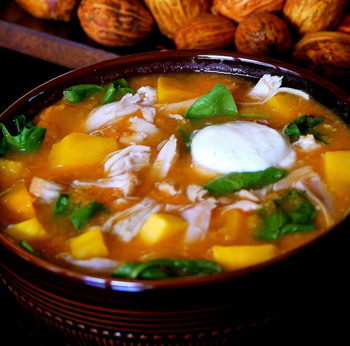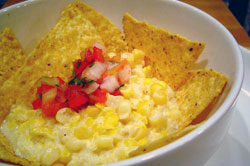 At my local farmers' market this past week, I found some thick, hefty ears of corn that had been growing all summer with swollen kernels to match. They reminded me of the juicy ears of corn we had used at Tante Marie's Cooking School in San Francisco when we made a wonderful corn soup with a fresh tomato salsa. As soon as I saw those ears of corn I knew I would make that soup as soon as I got home.
At my local farmers' market this past week, I found some thick, hefty ears of corn that had been growing all summer with swollen kernels to match. They reminded me of the juicy ears of corn we had used at Tante Marie's Cooking School in San Francisco when we made a wonderful corn soup with a fresh tomato salsa. As soon as I saw those ears of corn I knew I would make that soup as soon as I got home.
As I visited with each farmer at the market, exclaiming over all the beautiful produce, I was able to buy the tomatoes, onion, garlic, tomatillos and jalapenos that I needed for the salsa that would top each serving of corn soup.
The soup doesn't take long to make. Removing the kernels of corn from the cob is not difficult when you stand each ear of corn on its wide end in a large bowl. Using a sharp knife or an electric knife, cut away the kernels from each ear. I ran into a friend at the grocery store today who told me when he does this job, he props an ear of corn in the middle hole of an angel food cake pan and then cuts the kernels away using an electric knife. The corn drops into the cake pan


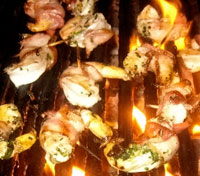 I started teaching my sons how to cook when they were barely tall enough to reach the kitchen counter. The first thing anyone needs to learn is good knife skills. I still remember his mom looking in horror when she walked into the kitchen to find me showing 5 year old Frank how to use a 10" chef's knife to chop Italian parsley. No blood was spilled that day, but the quality of my parenting was a topic of discussion for many months afterwards.
I started teaching my sons how to cook when they were barely tall enough to reach the kitchen counter. The first thing anyone needs to learn is good knife skills. I still remember his mom looking in horror when she walked into the kitchen to find me showing 5 year old Frank how to use a 10" chef's knife to chop Italian parsley. No blood was spilled that day, but the quality of my parenting was a topic of discussion for many months afterwards.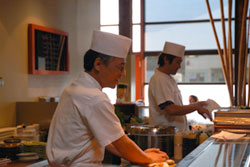 There was a time when I CRAVED greens. I mean it. CRAVED ‘em. Lambs tongue (mache) arugula, romaine, and kale (which I would stem, blanche, squeeze dry and then sauté in olive oil and garlic). Evan Kleiman has a terrific
There was a time when I CRAVED greens. I mean it. CRAVED ‘em. Lambs tongue (mache) arugula, romaine, and kale (which I would stem, blanche, squeeze dry and then sauté in olive oil and garlic). Evan Kleiman has a terrific 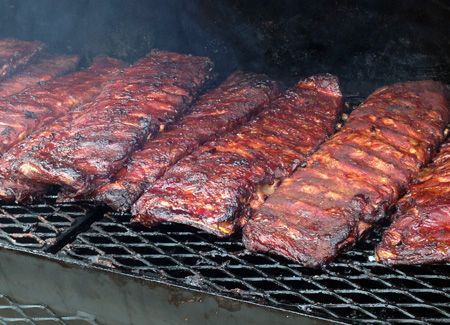 Sorry, brisket fanatics from Texas. My apologies, pulled pork addicts from North Carolina. If I had to pick my last meal on Planet Barbecue (I sure hope I never do), I’d order ribs. Perfect for July 4th celebrations, ribs offer it all: gnawable bones that provide structure and flavor, presenting a broad surface to the smoke and fire. Well-marbled, rich-tasting meat at with a price that remains relatively affordable -- especially when compared to steak.
Sorry, brisket fanatics from Texas. My apologies, pulled pork addicts from North Carolina. If I had to pick my last meal on Planet Barbecue (I sure hope I never do), I’d order ribs. Perfect for July 4th celebrations, ribs offer it all: gnawable bones that provide structure and flavor, presenting a broad surface to the smoke and fire. Well-marbled, rich-tasting meat at with a price that remains relatively affordable -- especially when compared to steak.